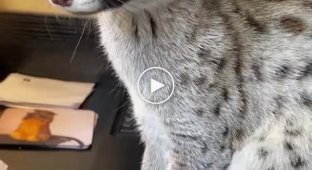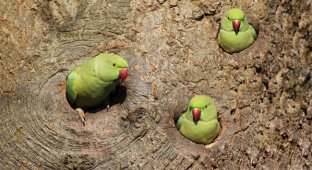Meerkats are much more than just cute little faces peeking out of burrows. These highly organized mongooses, found in the arid regions of Africa, exhibit amazing examples of social structure, survival strategies, and parental care. (As always, for those too lazy to read the video at the end) 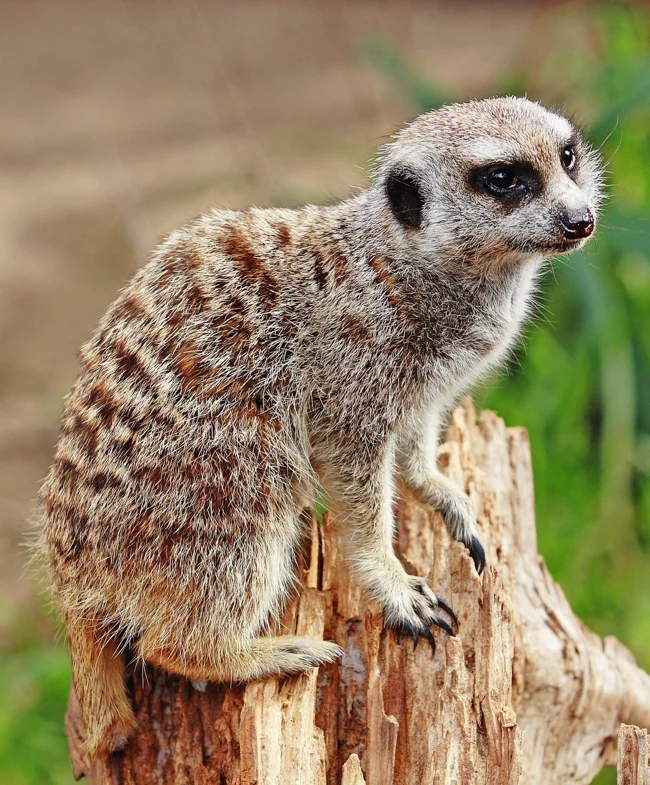
A LITTLE BIOLOGY:
They live in the arid regions of southern Africa, in the Kalahari Desert. The meerkat is quite small in size: the body length of an adult animal is about 25-35 centimeters, the tail is up to 25 cm, and the weight is about 700-1000 grams. Despite its modest size, this animal has truly incredible potential. The meerkat's fur is short, sandy or gray-brown in color with clear dark stripes on the back. A special feature of its appearance is the dark "glasses" around the eyes. These spots reduce glare and help the animal see better in bright sunlight - which is especially important in the open spaces of the desert.
Meerkats prefer dry, open landscapes: savannas, steppes and semi-deserts. They avoid dense forests and places with high humidity. The most famous habitats are the Kalahari Desert. 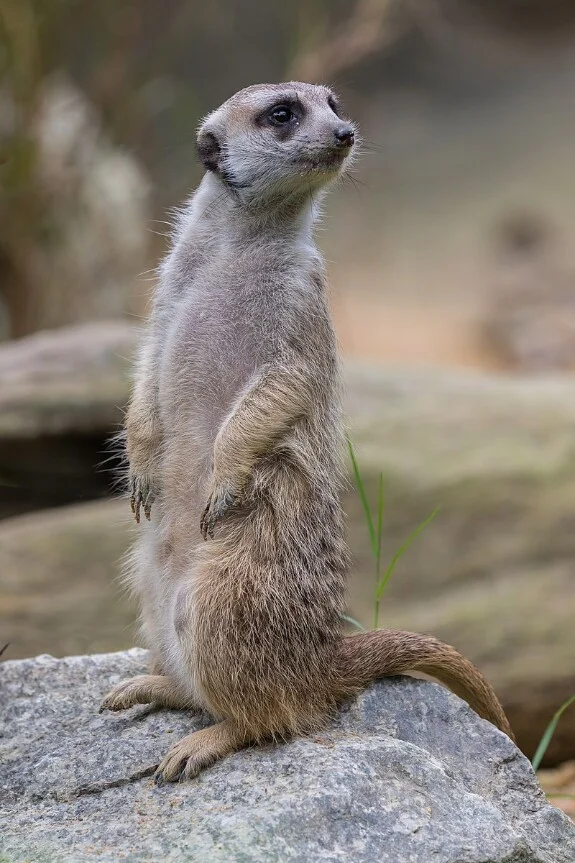
The ability to dig the ground is extremely important for their life - that is why they settle in places with soft, sandy soils. Here they create their real underground fortresses.
The anatomy of the meerkat is perfectly adapted to the desert conditions:
- The eyes are located high and provide a wide field of view, which helps to notice predators from afar.
- The front paws are equipped with long, powerful claws, with which meerkats quickly and effectively dig the ground.
- They have a very flexible body and strong hind limbs, allowing them to rise to a vertical position and "stand guard", balancing with the help of their tail.
- Meerkats have keen eyesight and hearing. They notice movement at a distance of up to several hundred meters and are sensitive to the slightest changes in the sound environment.
One of the most amazing qualities of meerkats is their high level of social organization. They live in clans, which can consist of 10-40 individuals (the recorded record is 63 individuals). Within the clan, there is always a dominant pair - only it has the right to reproduce. All other members of the group help to care for the offspring, get food and protect the territory. One family group controls an average territory of about 500 hectares (maximum 1500 hectares). Family groups are at odds with each other for territory, and battles often occur on their borders, often ending disastrously for at least one meerkat. 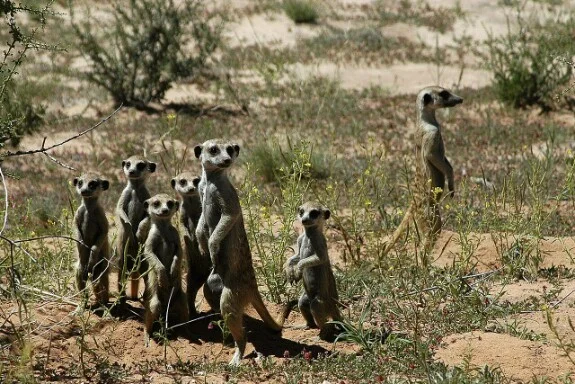
The daily routine of meerkats usually follows the same pattern: early in the morning, the animals wake up, clear the entrance to the burrow from sand, go out to look for food, rest in the shade during the hottest time, then go out to look for food again and return to the burrow about an hour before sunset. In winter, meerkats warm up in the morning sun while standing after hibernation. The behavior of meerkats is a real example of teamwork. While most of the group is busy looking for food, one or more meerkats stand guard, rising on their hind legs and examining the surroundings. If danger appears (for example, a hawk or jackal), the sentry gives a sound signal, and the whole group instantly freezes or hides in a hole. Interestingly, the alarm sounds of meerkats vary depending on the threat. For example, one signal if the predator is in the sky, another - if it is approaching on the ground. 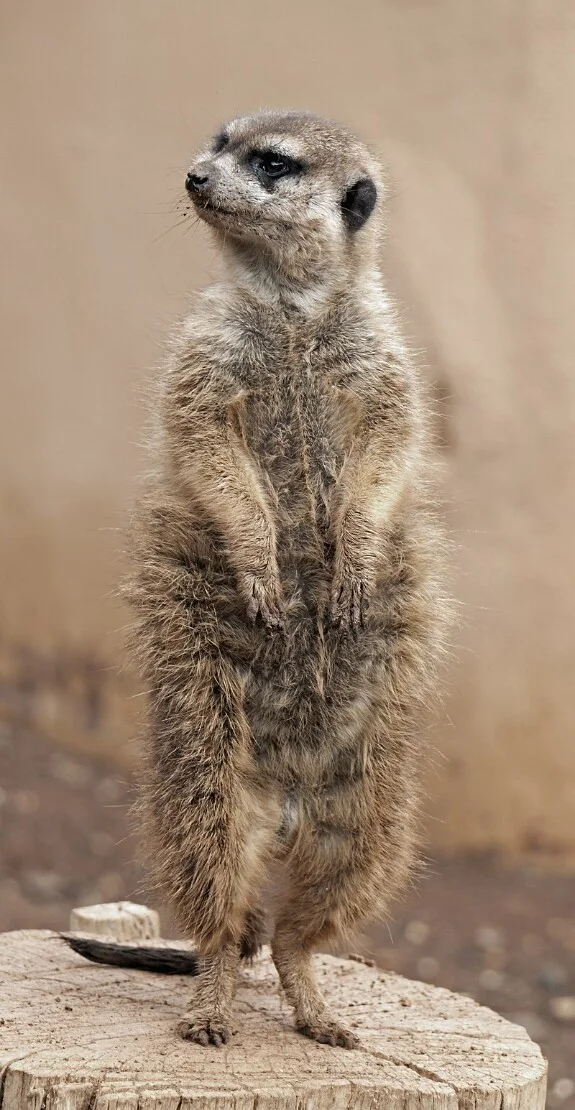
Meerkats are omnivorous predators, feeding near their burrow, turning over stones and digging cracks in the ground. They eat a wide range of animal and plant food sources, but prefer: insects (termites, beetles, grasshoppers), scorpions and spiders, small lizards and snakes, eggs of ground birds.
Meerkats reach sexual maturity at around 10-14 months of age. The female can give birth up to three times a year. Pregnancy lasts about 11 weeks, after which 2 to 5 cubs are born. The cubs are born blind and helpless, in a shelter underground. After 2-3 weeks, they begin to see and go outside. But what is especially interesting is that they are taught by adult members of the clan. They show them how to find food, avoid danger and interact with others. Sometimes the adults even throw half-dead prey so that the cubs can practice. 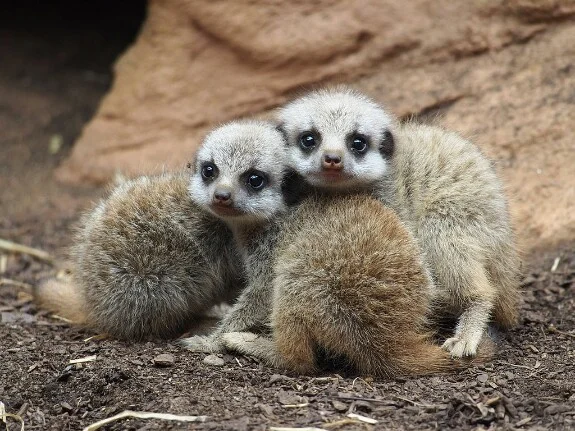
Meerkat burrows are not just holes in the ground. They are complex underground systems that can include dozens of chambers and exits. These burrows protect from the heat during the day and from the cold at night, and also serve as a refuge from predators. Often, meerkats use old burrows of other animals (for example, aardvarks), and then add to and modify them to suit their needs. Inside these burrows, each family can have a separate "bedroom", as well as places for cubs and food storage. 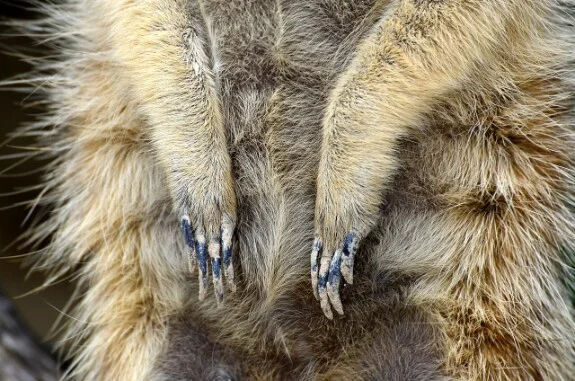
Communication in meerkats is a separate topic. Scientists have counted more than 30 different sounds used for different purposes: an alarm signal, calling, searching for each other, communication between mother and cubs, "conversations" during meals and games. But meerkats are not limited to voices. They actively use body language: tail movements, posture, behavior when meeting. This makes their behavior very expressive and "human" in appearance.
The life expectancy of meerkats in the wild is on average 4-5 years, in captivity it can reach 12-14 years.
INTERESTING FACTS:
- Meerkats have increased immunity to snake venom. They are also relatively resistant to the venom of scorpions living in the Kalahari Desert; True, the bite of especially dangerous species of scorpions can be fatal for a meerkat, but the situation is usually saved by the agility of the animal, its lightning-fast reaction and the practice of actions, during which it first gets rid of the scorpion's poisonous tail by biting it off, and then removes traces of poison from the scorpion's chitinous shell with sand. Both adults and cubs feed on scorpions. Moreover, adults do not just feed the babies, but use unique strategies for learning to catch and neutralize scorpions
- Meerkats are able to distinguish individual voices of their relatives. When one of them gives a signal, the others know exactly who said it. This is especially important for communication in a large group: by the voice you can understand the level of threat, the emotional state of the "speaker" and even his rank. 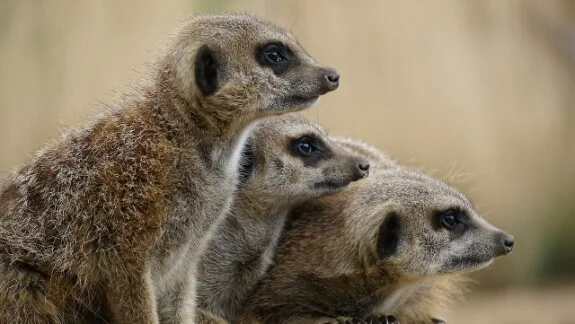
- Meerkats chatter almost non-stop. Even while eating, they are not silent - they constantly give short signals so that everyone knows where everyone is and if everything is okay. This is called "contact grumbling" and resembles communication in a crowd of friends.
- One meerkat colony can have up to 90 entrances and dozens of tunnels that go underground to a depth of 2 meters. Some burrows are used by generations and are regularly updated. Each family has its own "apartments", bedrooms and even "back exits".
- During feeding, there is always at least one meerkat standing guard. He does not eat, does not get distracted, but only watches and listens. If he notices danger, he gives a signal - and the whole group immediately reacts. It is interesting that the sentry can be different every day - this is not a fixed role, but a voluntary duty. 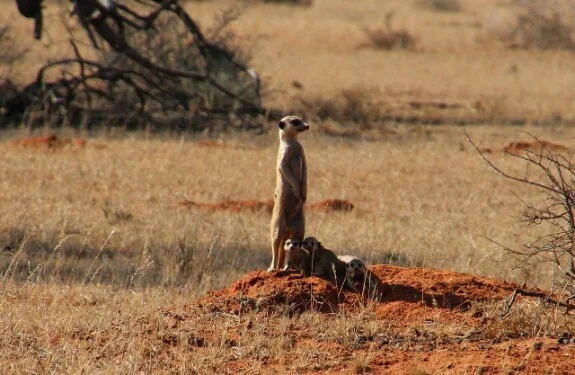
- Cubs are not simply left to their own devices - they are trained: adults show them how to dig, how to look for food, how to recognize signals and even how to playfully fight. Lessons can last for days. If a cub makes a mistake, they are helped, but not scolded.
- When meeting a predator, meerkats can puff up, hiss and raise their fur, creating the appearance of a large and aggressive animal. Sometimes the group gathers into a tight ring, raising their tails and growling loudly. All this is part of a deceptive defense strategy. 
- In the wild, there have been cases where meerkats played with young jackals or birds without showing aggression. In captivity, they sometimes make friends with dogs, cats, or even monkeys. But only if they grew up together - adult meerkats do not tolerate strangers.
- Meerkats sleep huddled together in a tight "pile". This is not only cute, but also vital: at night in the desert, the temperature can drop sharply. Sleeping together keeps them warm and creates a sense of security. The warmest place usually goes to the cubs. 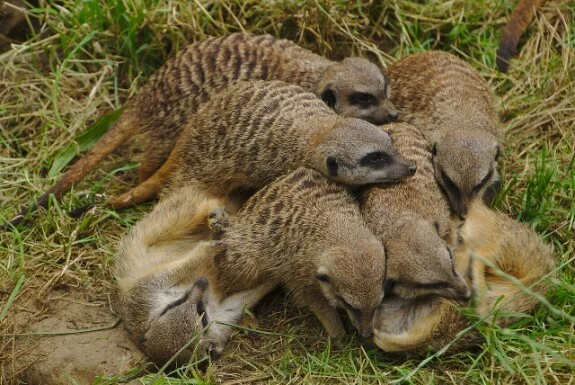
- When one meerkat is upset (for example, lost a cub), others can come up to it, rub their muzzles, "comfort" and even bring food. This proves that they have elements of empathy and support, which is extremely rare in animals.
- Meerkats are active burrowing animals. Meerkat colonies dig burrows and can use burrows together with the Cape ground squirrel and yellow mongoose. All three of these species lead a generally similar lifestyle, can live in a common burrow system and not conflict.
- Timon the meerkat is the most famous character in the animated film "The Lion King" and one of the main characters in the animated television series "Timon and Pumbaa", a companion and best friend of the warthog Pumbaa. 
- Some popular science sources recognize this small animal as one of the most bloodthirsty: according to their data, up to a fifth of the mortality rate of animals is due to the consequences of their fights with each other. A 2016 study in Nature showed that they are the most bloodthirsty of mammals to their own kind, confirming their intraspecific destruction of their fifth.
- Meerkats are easily tamed. They are very sensitive to cold. In South Africa, meerkats are kept as pets to catch rodents and snakes. Meerkats are sometimes confused with yellow mongooses (Cynictis), with which they often live side by side. Yellow mongooses are not domesticated and do not make pets.
Add your comment
You might be interested in:












